Crescendo Software Review: How Good Is It for Music Notation?
6 min. read
Updated on
Read our disclosure page to find out how can you help MSPoweruser sustain the editorial team Read more
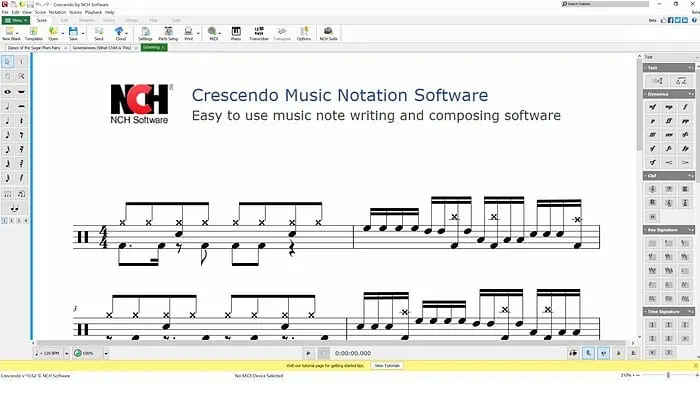
In need of a Crescendo software review before making a purchase? I got hands-on with the NCH music notation and composition tool to test its key features and interface.
NCH Crescendo is a desktop and Android app that helps musicians and composers create, edit, and print sheet music. It’s also available for macOS and iOS.
It offers a comprehensive range of notation symbols, MIDI compatibility, and audio transcription. But how good is it in action? Let’s find out!
Features
Let’s take a deep dive into its key features on Windows:
Notations, Chords, and Lyrics
Crescendo supports a wide array of music symbols and chords, as well as full guitar tablature. You can also add your own lyrics to create a complete and professional-looking score.
Notations include clefs, time signatures, key signatures, bar-lines, accidentals, ties, slurs, and more.
It supports all notes and rests:
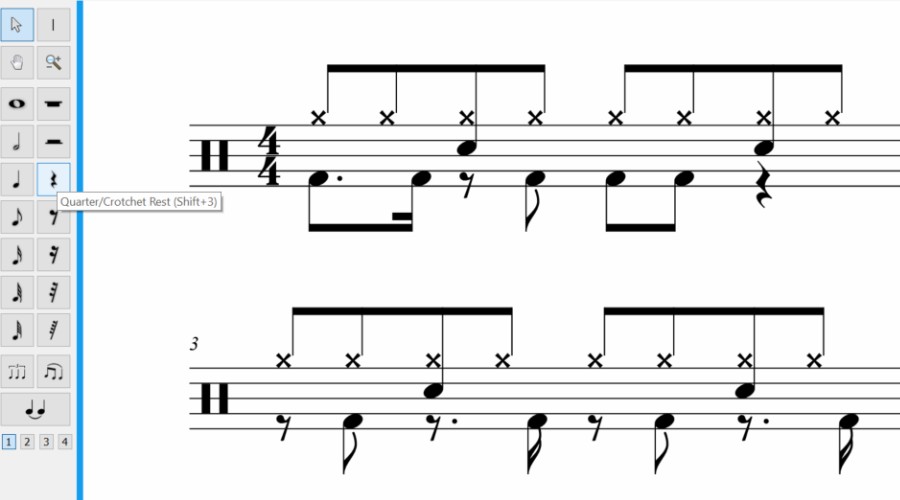
- Whole note/rest (semibreve)
- Half note/rest (minim)
- Quarter note/rest (crotchet)
- Eighth note/rest (quaver)
- Sixteenth note/rest (semiquaver)
- Thirty-second note/rest (demisemiquaver).
Furthermore, you’ll find numerous templates for percussion, tablature, notation, and choral compositions.
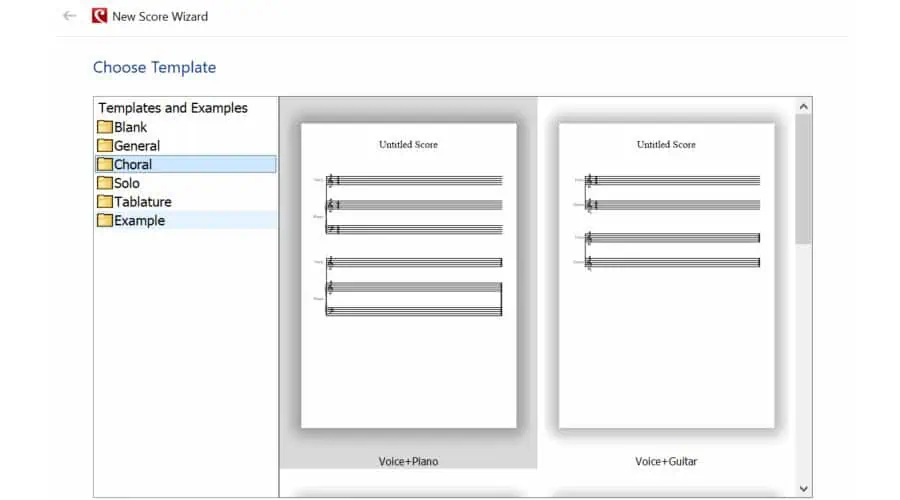
Overall, nothing is missing from common sheet music. I also like that you can tag the names of notes if you’re a beginner or working with a student.
MusicXML Support
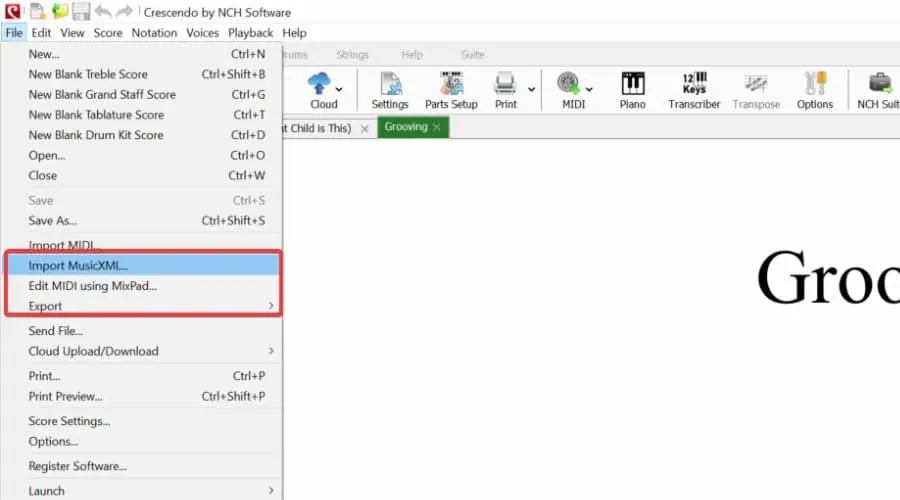
By clicking File, I could easily import and export MusicXML files. This is useful for collaboration and file sharing with other musicians or software.
The big drawback is it doesn’t support non-standard formats or handwriting recognition like PreSonus Notion. Forte Notation even scans sheet music. With Crescendo, anything you import must already be properly digitized.
MIDI Compatibility
Crescendo also supports MIDI, so you can connect a MIDI keyboard or other digital instruments to input notes directly into the program.
It includes a virtual piano keyboard too, so you don’t need the physical instrument.
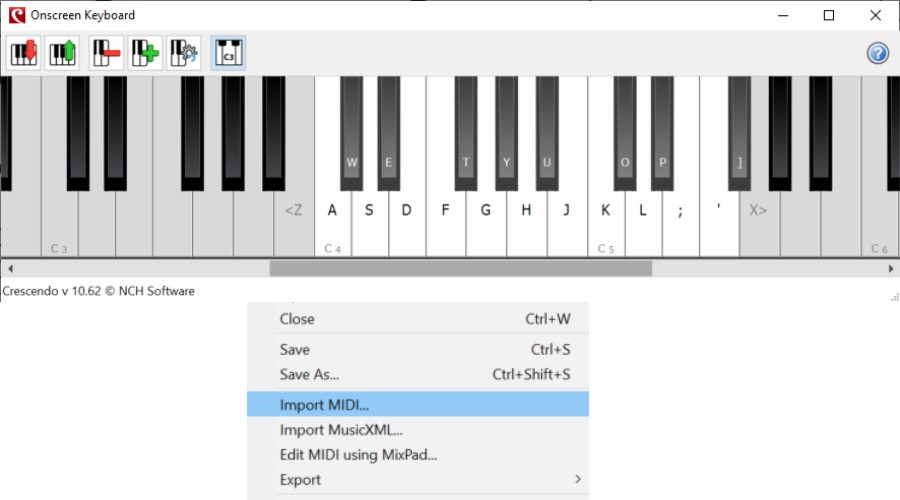
All this streamlines the composition process.
VSTi Instruments
Compatibility also extends to VSTi virtual instruments, though you’ll need separate plugins. Then you can open Audio Options and specify the folder.
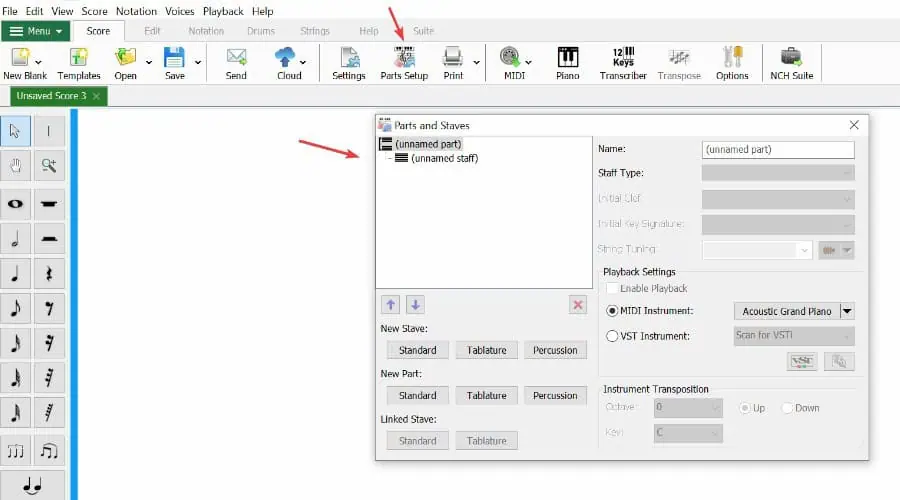
You can select the VSTi plugin you want to use for each staff in your musical score by clicking the VSTi button in the Parts and Staves dialog.
Transposing
With the transposer, you can easily change the key or pitch of your entire composition:
- By key – Automatically transposes both the notes and key signatures to the desired key. This is especially useful when you need to adapt a piece of music for different vocal ranges or instruments.
- By interval – Manually choose the number of semitones to transpose up or down. For example, transposing by 12 semitones will shift the piece up by an octave, while doing so by -4 semitones will shift it down by a major third.
Music Transcriber
I found the music transcriber capable of detecting accurate notes in polyphonic recordings, making it great for complex arrangements.
I was even able to automatically transcribe a commercial song with lyrics in roughly five minutes.
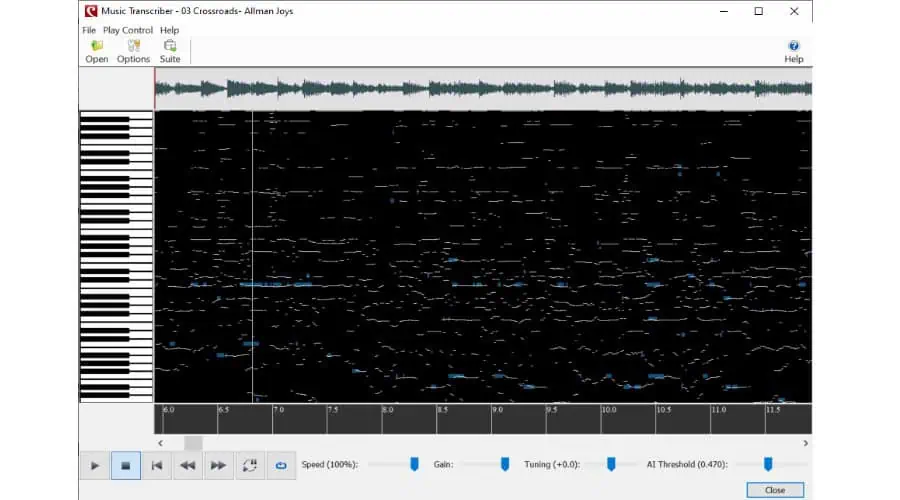
The user-friendly interface displays the waveform of your recording, along with the pitch analysis in the main panel.
You can customize settings for clearer graphs and slow down the playback speed without altering the pitch. It can also loop specific sections to help the transcription process.
It supports both audio files and tracks directly from your CD Drive.
Previewing and Sharing
You can preview all aspects of your composition with simple MIDI playback. When you’re happy with the results, go to File > Export, and you can export in MID, WAV, and MP3 format.
You can directly print the score sheet in the software, email it, or save it in PDF, TGA, JPG, PNG, and more.
Alternatively, you can print formatted blank music sheets to write by hand.
It’s also good to see a cloud upload and download option via Dropbox and Google Drive, though this only supports scores not audio files.
Interface
During my Crescendo software review, I found its interface to be clean and organized. However, as a relative newcomer to music notation and composition tools, there’s still a bit of a learning curve.
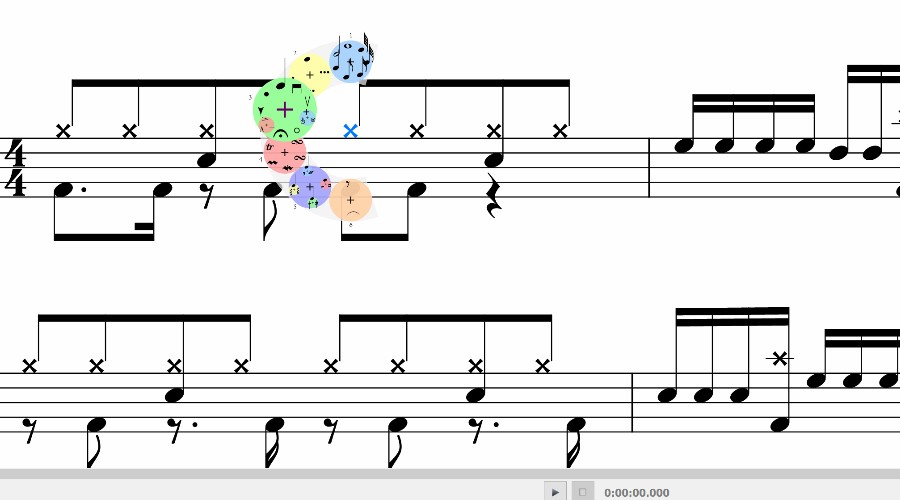
The sheet takes up the main window and it’s easy to click on notes, make changes, and move along the timeline. Zooming in and out helps you edit the finer details.
It supports keyboard shortcuts to toggle between notes and rests. Moreover, you can click the text tools to create a title, specify the tempo or dynamics, or add lyrics.
The toolbars to the left and right give easy access to different notes, rests, signatures, etc. Meanwhile, the buttons at the top are for other tasks like saving, printing, accessing the virtual piano, MIDI, and more.
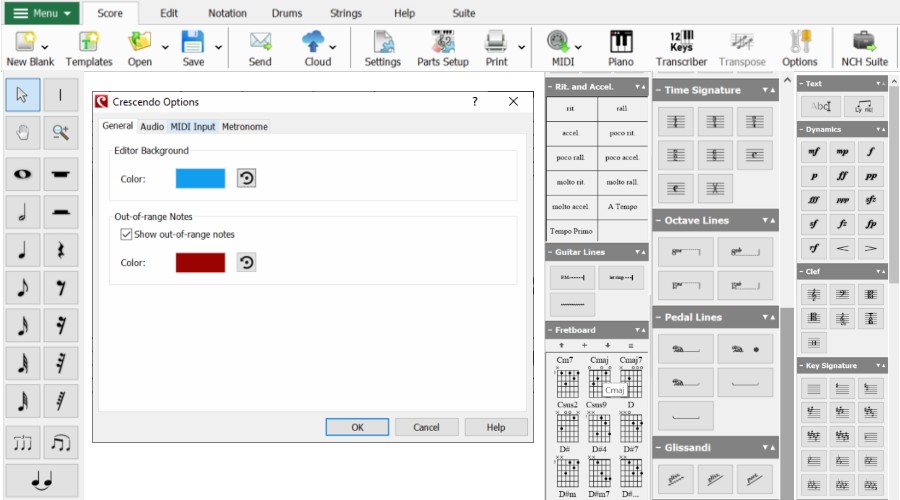
Also at the top, you can easily switch between the main score, notation, drums, and strings.
I like that you can adjust the page layout, staff spacing, and other formatting options to create a polished final piece.
Compared to the likes of Avid Sibelius and PreSonus Notion, the interface does look a little dated. However, this didn’t affect its usability.
It’s also worth noting that it’s not an interface for audio editing software, but NCH does offer a separate MixTape tool for editing and audio mixing.
Notation and composition software with built-in workstations are the realm of PreSonus’ Studio One, Fl Studio, or Apple Logic Pro X for Mac.
Customer Support
Crescendo provides extensive help pages with a shortcut within the software.
If you wish to contact the staff directly, you should go to the bottom of the support page and click None of the above answers my question. This takes you to an email form.
While there’s no guaranteed response time, I received a same-day response to my test question during this Crescendo software review.
Unfortunately, there’s currently no live chat or phone number for a faster response.
Pricing
You can try NCH Crescendo in a limited capacity for free. To access all its features and get unlimited use, you must upgrade to a premium license.
However, unlike Dorcio and Avid Sibelius, it doesn’t lock features behind increasingly expensive plans.
Here are the options:
- Hobbyist ($80) – Single license, all features, personal use only.
- Master’s Edition ($129) – Singe license, all features, commercial and business use permitted.
- Quarterly Master’s Edition ($7.16/mo billed quarterly) – All of the above, plus all future upgrades.
Note: Special offers are common. You can currently get the Hobbyist license for $59/95 and Master’s Edition for $79.99.
Check out the pricing page for discounts on other bundled NCH software.
All purchases come with a 30-day money-back guarantee.
Crescendo Software Review – Verdict
All things considered, Crescendo hits all the key notes with a few minor misses. If you can overlook the lack of DAW, handwriting recognition, and dated interface, there’s not much to dislike.
It’s much more affordable than some of the industry standards and its support for both Android and iOS is worth noting. Most swing towards iOS only.
I say give the free version a try and see if it clicks. Hopefully, this Crescendo software review will help you make up your mind.








User forum
0 messages